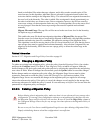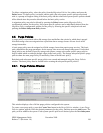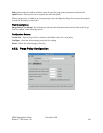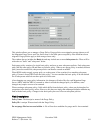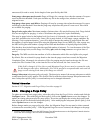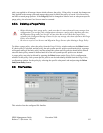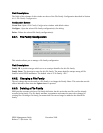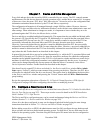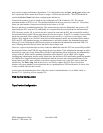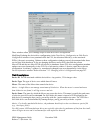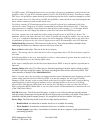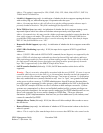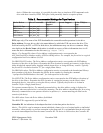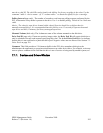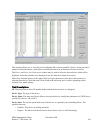Chapter 7. Device and Drive Management
Every disk and tape drive that is used by HPSS is controlled by two servers. The PVL controls mounts
and dismounts (for disk devices these are logical operations only), and the Mover controls I/O. In support
of these two views, the terms “PVL drive” and “Mover device” are used to refer to the configuration and
information maintained about the drive by the PVL and Mover, respectively.
The configuration information is all managed through a single SSM list window. However, there are
separate PVL drive and Mover device information windows, each with their own administrative state and
other settings. When administrative changes are made, it is important to know whether they are to be
performed against the PVL drive, the Mover device, or both.
Devices and drives are added and deleted dynamically. This means that they are added and deleted while
the system is UP. Specifically the PVL must be UP; additionally it is expected that the associated Mover
and associated PVR (for tape) are also UP. A new device and drive cannot be used until the PVL has
successfully informed the associated Mover and PVR (for tape) about the new device and drive.
Likewise, a previously deleted device and drive cannot be added back until the PVL has successfully
informed the associated Mover and PVR (for tape) about the delete. Likewise, a previously added device
and drive cannot be deleted until the PVL has successfully informed the associated Mover and PVR (for
tape) about the add. Further details are described in this chapter.
In general, devices and drives can not be updated dynamically (i.e. while the PVL, associated Mover and
associated PVR (for tape) are UP). However, there are some drive attributes for which the configuration
metadata can be updated dynamically via the PVL Drive Information window and there are some device
attributes for which the configuration metadata is not updated dynamically but the server “in memory”
values can be changed dynamically (but not preserved when the Mover is restarted) via the Mover
Device Information window. Further details are described in this chapter.
Note that all newly-created PVL drives are locked (i.e. the Devices and Drives window Drive Admin
State reports “Locked”), which prevents mounts from occurring on the drive. Therefore, the PVL drive
will need to be unlocked before the drive can be used. This can be done by highlighting the device/drive
in the Devices and Drives window and pressing the “Unlock” button under the Drive Administration
group heading.
Review the appropriate subsections of Section 5.1.1: Physical Volume Repository (PVR) Specific
Configuration on page 109 before configuring a device/drive or modifying its state.
7.1. Configure a New Device & Drive
Be certain all tape drives are configured to use variable block sizes (Section 7.1.2: Enable Variable Block
Sizes for Tape Devices on page 207). These steps are also covered in detail in the HPSS Installation
Guide. Section 3.7.7.2: Tape Devices.
The Device and Drive configuration entry can be created and managed using the Devices and Drives
window (Section 7.1.1: Devices and Drives Window on page 202).
After a drive has been configured, its state can be changed (unlocked/locked) using the state change
instructions described in Section 7.1.1: Devices and Drives Window on page 202.
Before adding a tape drive to HPSS, the administrator must first fully configure the tape hardware and
driver software into the host platform and operating system. For disk drives, the raw disk must first be
defined in the operating system. Note that using the block special file name in the device configuration
HPSS Management Guide November 2009
Release 7.3 (Revision 1.0) 196



